
Shining a Light on History: Liberty Talks at WHAT
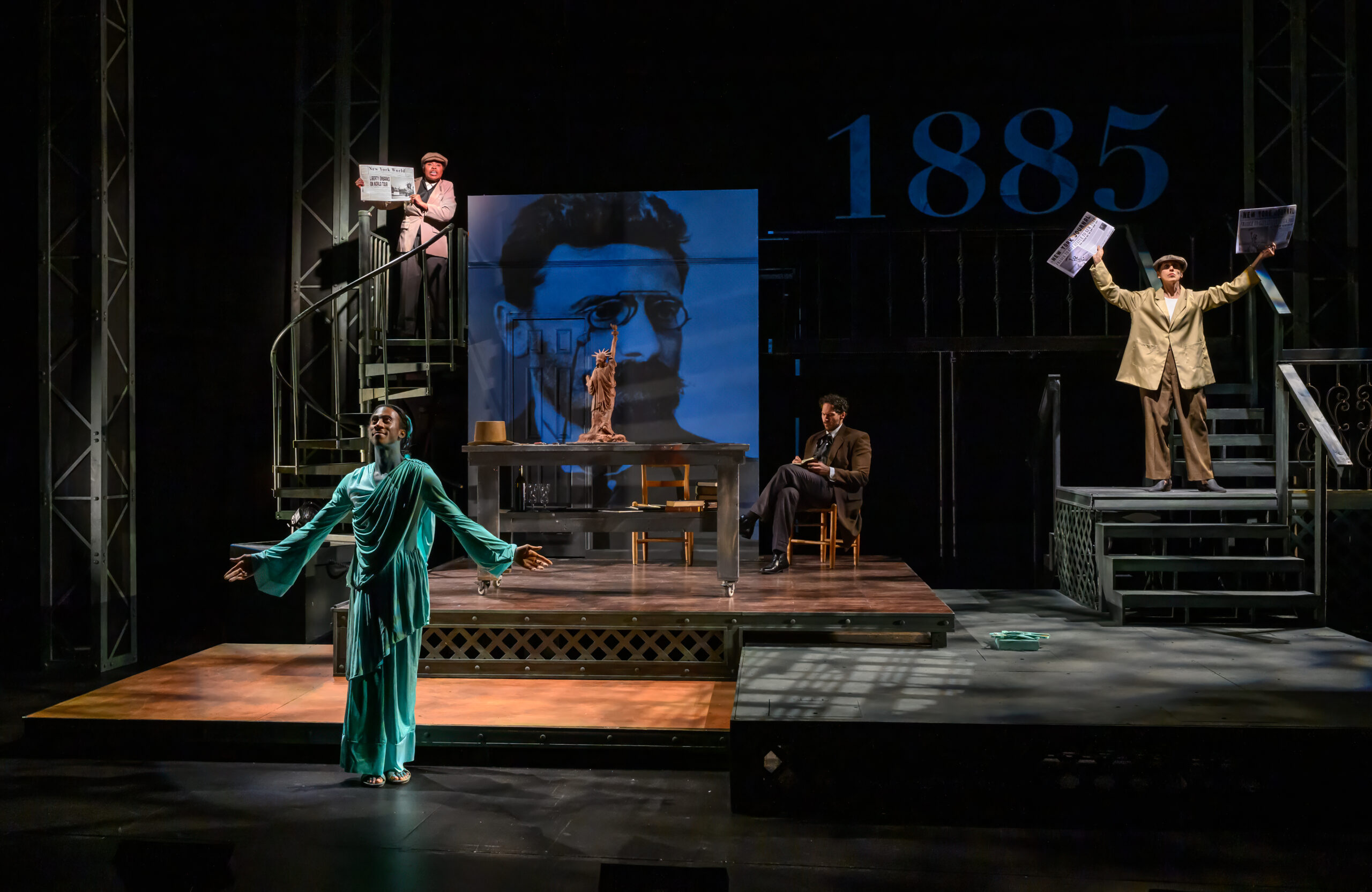
She’s one of the most recognizable monuments anywhere, instantly identifiable, connected to vague words like freedom, liberty, independence. As American, one might say, as apple pie.
Except that she’s not. The story behind the Statue of Liberty is somewhat more complicated, and a lot less straightforward—and it’s being told in the world première of Fermín Rojás’ Liberty Talks, now at the Wellfleet Harbor Actors Theater.
Generations of people have tried to fit the statue into their particular concept of America, using it as a symbol of either welcome or of oppression, but here it’s singularly personified by “Libby” (Brandon Curry), who enters, pairing her torch and tabula with a cup of—what else?—Starbucks coffee. She reluctantly tries to engage the audience, first in French (with which, she confesses, she’s out of practice; French speakers in the audience will agree) and then in slightly expletive-laced English. She’s clearly having a bad day.
But she has a story to tell, and once a girl gets off her pedestal, it’s very difficult indeed to persuade her to get back on it! And Libby has a lot to say, weaving her own witty perceptions and rich reactions into the uneven tapestry of her origin story.
Which begins like this: French attorney, writer, and activist Edouard de Laboulaye was excited by the United States’ recent abolition of slavery when he began raising support in France for the idea of gifting something spectacular to America to celebrate that milestone; and sculptor Frédéric-Auguste Bartholdi (Sam Perwin) agreed, even eventually placing a broken shackle and chains at Libby’s feet.
But Libby’s relationship with her creator is fraught, as each struggles to be the master of the moment in history; and Libby is clearly tired of millions passing her by in so many different ways while she stands endlessly in the same place.
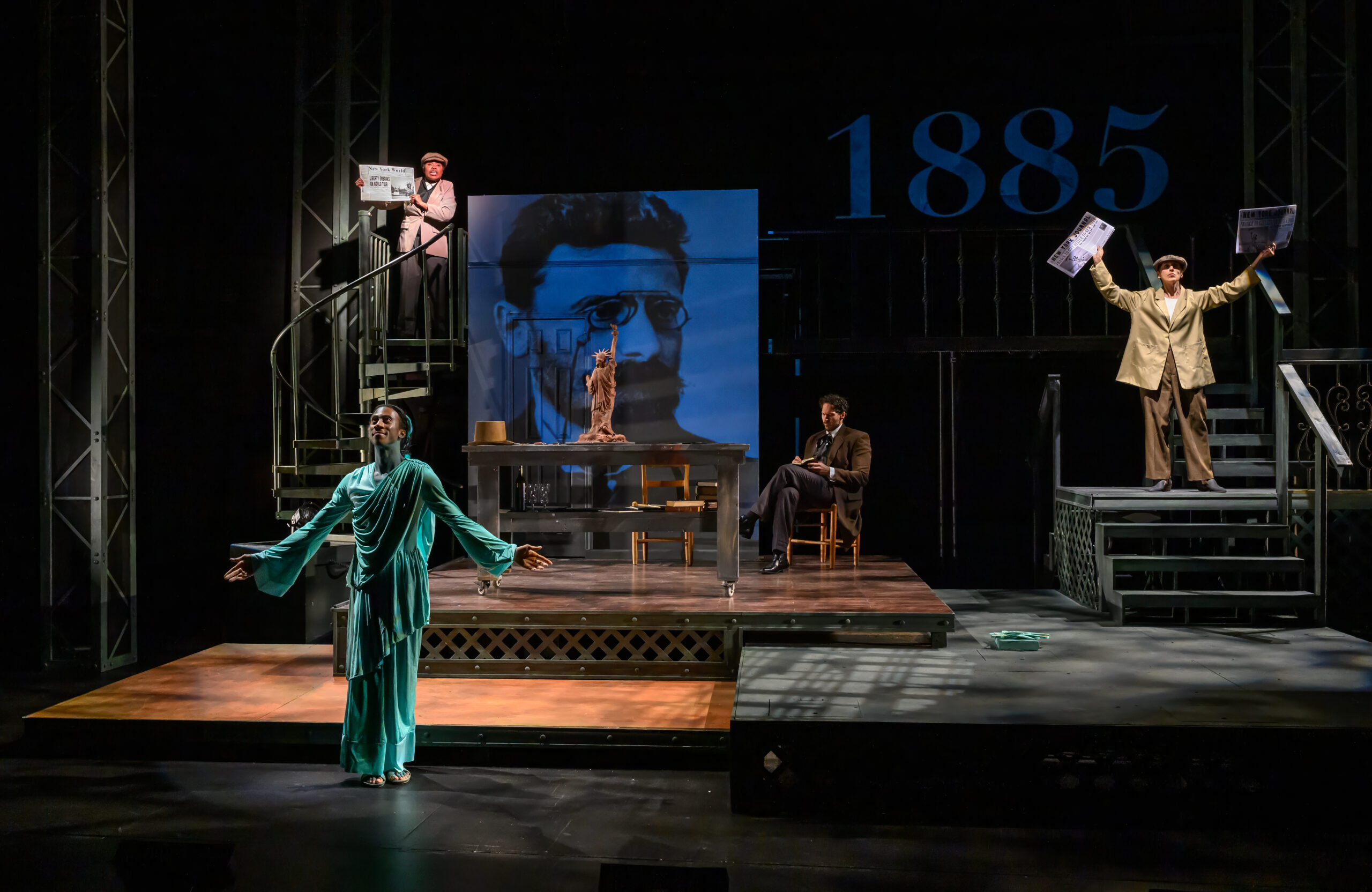
And so the audience is treated to a whirlwind of American history seen through the eyes of the statue—sometimes interacting with other statues, notably that of Emma Lazarus (Eileen Sugameli), Sojourner Truth (Richarda Abrams) and Blind Justice itself (Miriam Kulick), sometimes with a gaggle of schoolchildren and their hapless teacher (Pedro Gonzaléz), and eventually with both Emma Lazarus and Lillie Devereux Blake, both feminists/suffragists.
Rojás brings up interesting contradictions within the storytelling, which occasionally jumps a little disconcertingly between different historical eras. It might be party time when the statue is unveiled, but there are a whole lot of people in the country who weren’t invited. “Shove the Bartholdi statue, torch and all, into the ocean,” says Sojourner Truth, “until liberty of this country is such as to make it possible for a colored man in the South to earn a respectable living, without being ku-kluxed, perhaps murdered, and his property destroyed.” Devereux agrees. “How dare you,” she demands, “use the image of a woman in a land that will deny us our rights?” Truth concludes, a little sadly, that “the idea of liberty of this country, enlightening the world, is ridiculous in the extreme.”
A couple of centuries on, we’re still asking those questions.
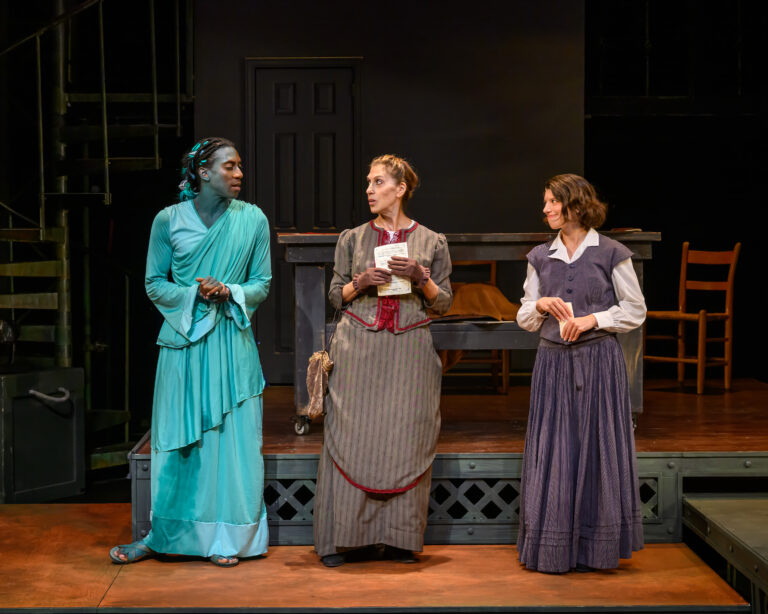
Christopher Ostrom (and his team of carpenters and projection and electrical professionals) has again done a fabulous job of literally setting the stage in a space that’s multilevel, very mixed media, and evoking the indefinable personality of New York. Director Janice Goldberg uses the space to her advantage and elicits complex performances from actors inhabiting a series of different characters—everyone was well-cast.
It is of course Curry who is the star, present in every scene, wise-cracking, showing us what might be going on behind the façade of easy-to-espouse yet difficult-to-live concepts. He is wickedly funny, sexy and absurd by turns, with a strong voice that is startlingly human (smoking a joint, drinking bourbon, and popping pills… “I take them for my back, okay?” she hisses. “You try holding up that torch!”).
Others have tried to work the image of the Statue of Liberty into their messages—I’m remembering in particular Crosby, Stills, and Nash’s words, “they shot my Lady Liberty in the back of her head”—but none quite so mordantly as Liberty Talks. At a time when symbols are being used and misused on a number of different levels, this play reminds us that behind all the stories are human lives, and they are ignored at our peril.
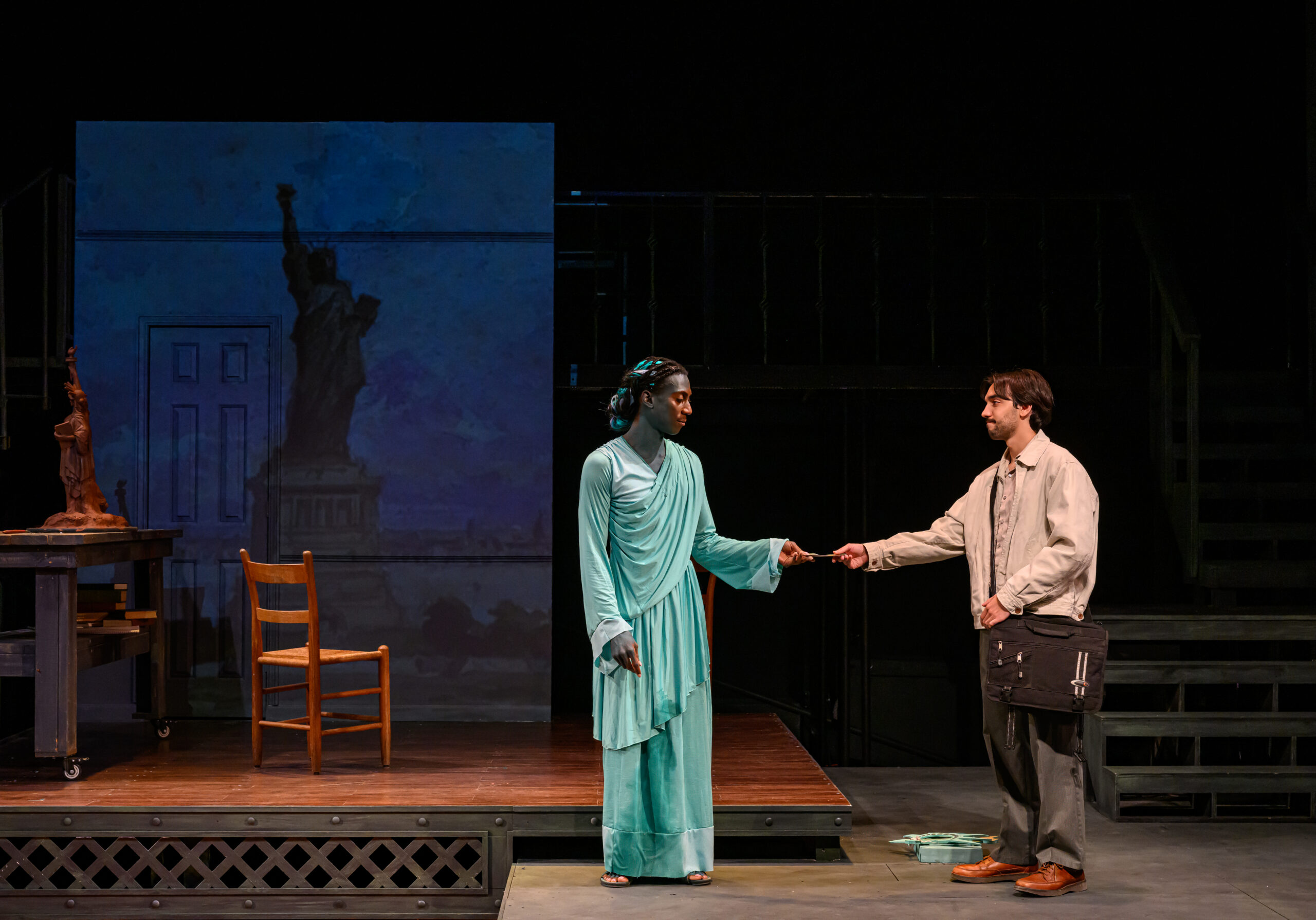
Review by Jeannette de Beauvoir
Images by Mike Kerouac
Extra: Check out the interactive program to learn more about all these characters!
Liberty Talks: A Colossal Satire
Wellfleet Harbor Actors Theater
September 14-October 6, 2024
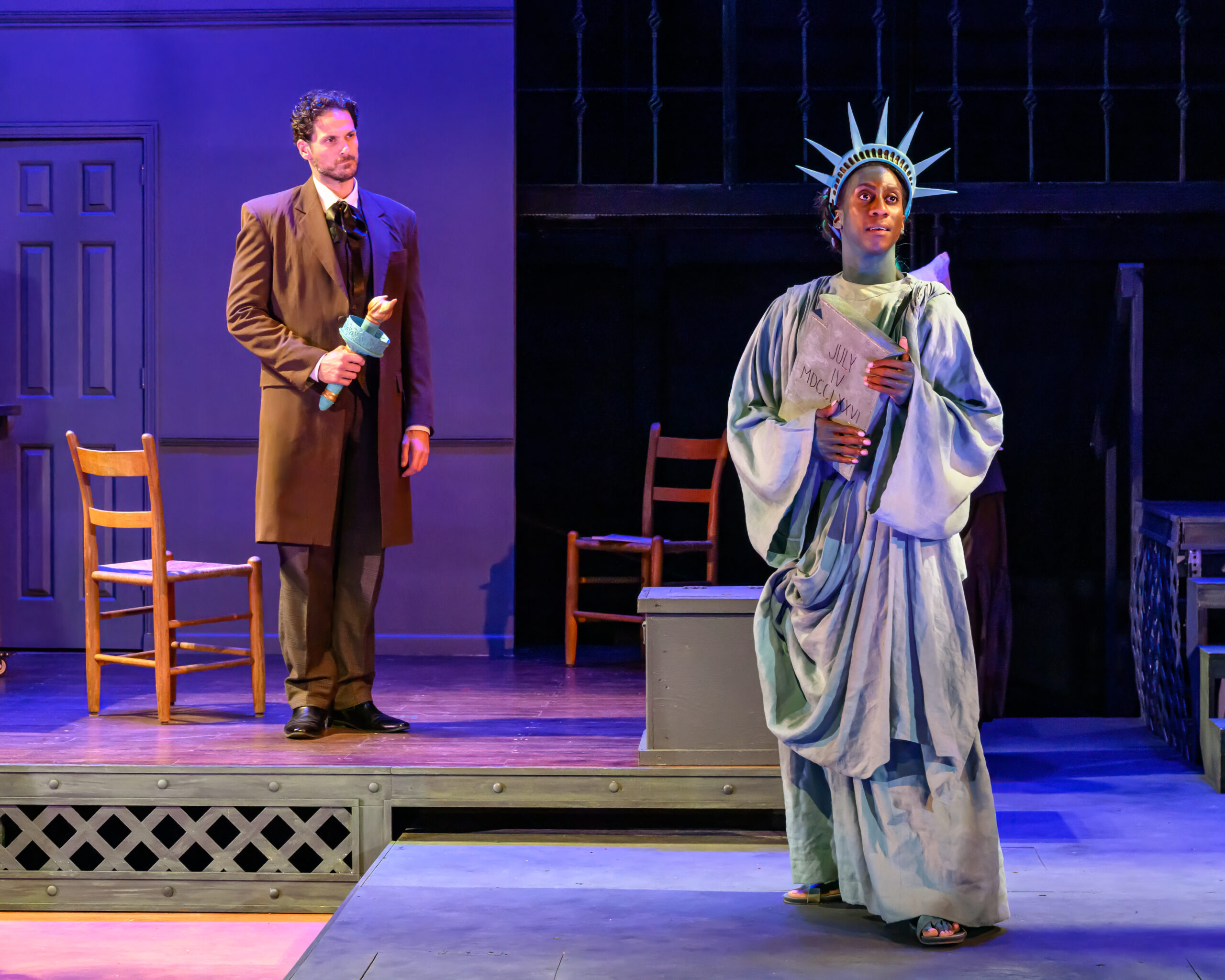
More Recent Provincetown News

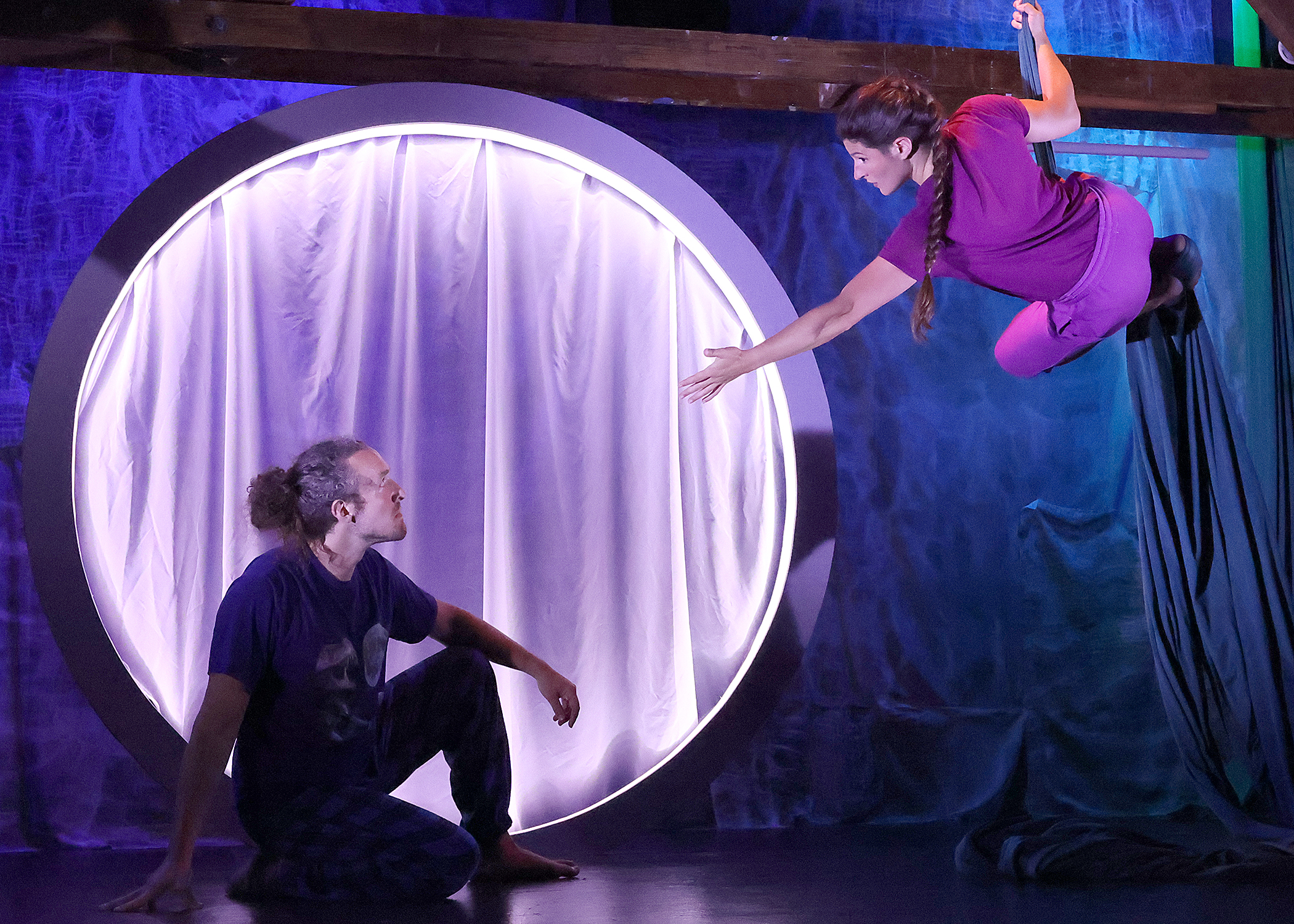


 Accommodations
Accommodations  Art
Art  Bars
Bars  Books
Books  Entertainment
Entertainment  Events
Events  Featured
Featured  Guides
Guides  History
History  Literary stuff
Literary stuff  Most Popular
Most Popular  Provincetown News
Provincetown News  Restaurants
Restaurants  Reviews
Reviews  Shopping
Shopping  Theatre
Theatre  Uncategorized
Uncategorized  Weed
Weed